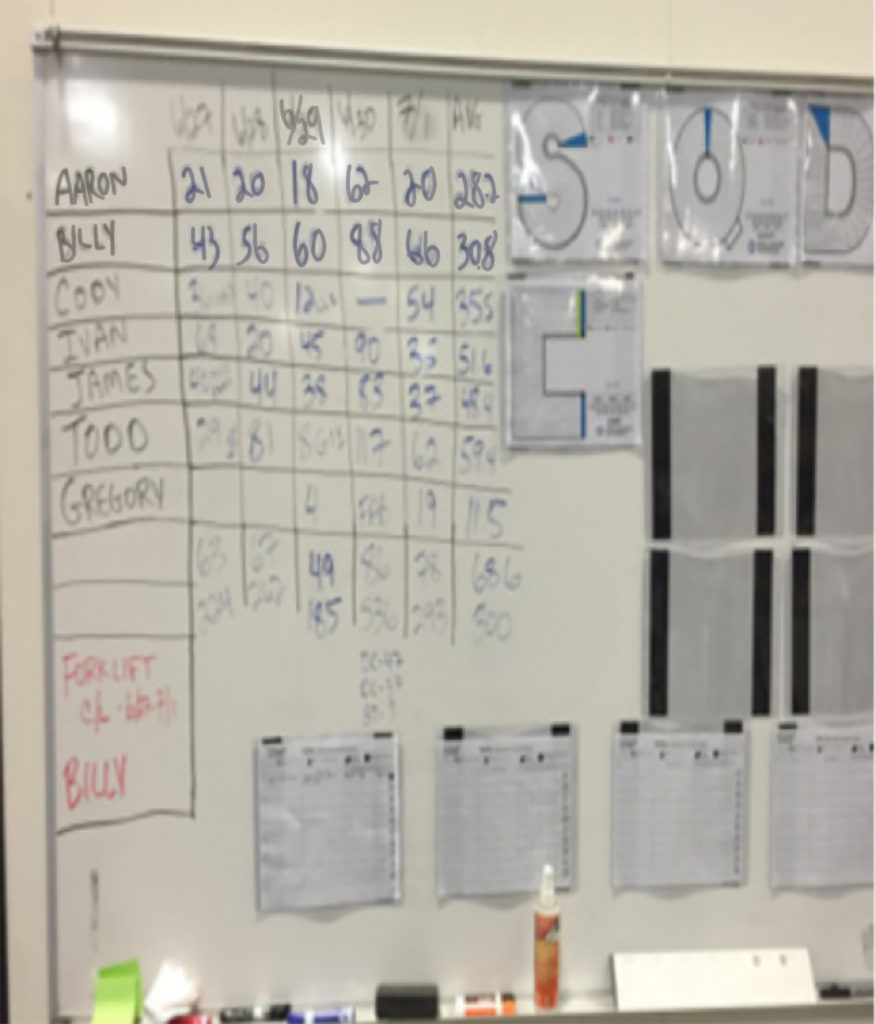All successful operations leaders have one thing in common… a game plan for how they are going to manage their operations.
They know the tools at their disposal, they map out their strategy, they set goals for their team and train each person on how to use the tools to achieve those goals, and then they manage the process using a consistent cadence.
The recipe for a great operations game plan is this:
- Tools
- Strategy
- Goals
- Train
- Manage
Daily accountability is the foundation we will build our operational strategy on.
In order to drive performance higher, we need to be able to hold everyone accountable on a daily basis.
That includes both recognizing great performance and taking corrective action with those who are consistently underperforming.
Many companies try to use single metrics when measuring productivity. This is a mistake.
Examples of single metrics would be cases per hour, or lines per hour.
While these might provide acceptable insight into an employee’s performance when averaged over a month, daily results can be all over the board .
Here is a simple example:
- John picks 1 large order which contains 5 lines and 100 cases. It takes him 1 hour.
- Sally picks 10 small orders which contain 50 lines and 100 cases. It takes her 3 hours.
Who is more productive?
If we base our standard on cases/hr, John achieved 100 cases/hr while Sally only had 33.3 cases/hr
But if we base our standard on lines/hr, John achieved 5 lines/hr while Sally achieved 16.7 lines/hr
We would argue that neither approach provides a fair standard.
In order to compare productivity when there is a lot of variation in the workflow, we would need to base the standards on multiple metrics. In this scenario we would want to give each employee time for the number of orders, lines and cases they processed as well and the number of feet they traveled while doing the work. Once all those metrics are taken into consideration, we may discover that both employees achieved a similar productivity score.
Figure 1 – This picture below shows a real-life example that illustrates this point well.

On 6/29 Aaron only had 18 units while Billy had 60. If I am the supervisor, what action should I take?
It appears that Aaron is underperforming, but what if he had all the small choppy orders?
Or what if he needed to travel to the annex building multiple times to pick those orders?
Or what if he spent half his day in Special Projects while Billy was able to devote his full shift to Picking?
When you start multiplying this scenario by dozens of employees and multiple processes, it can be very challenging for supervisors to effectively manage their teams. Basically, if your supervisors don’t have the tools and data to measure and report on fair standards, they can’t be effective at leading their teams.
Therefore, the first step in developing an operational game plan should be capturing the correct amount of time on each task and measuring the performance of those tasks using multiple metrics if necessary.
Developing fair standards, and measuring and reporting on them according to a regular cadence, is the foundation upon which great operations team performance is built.





